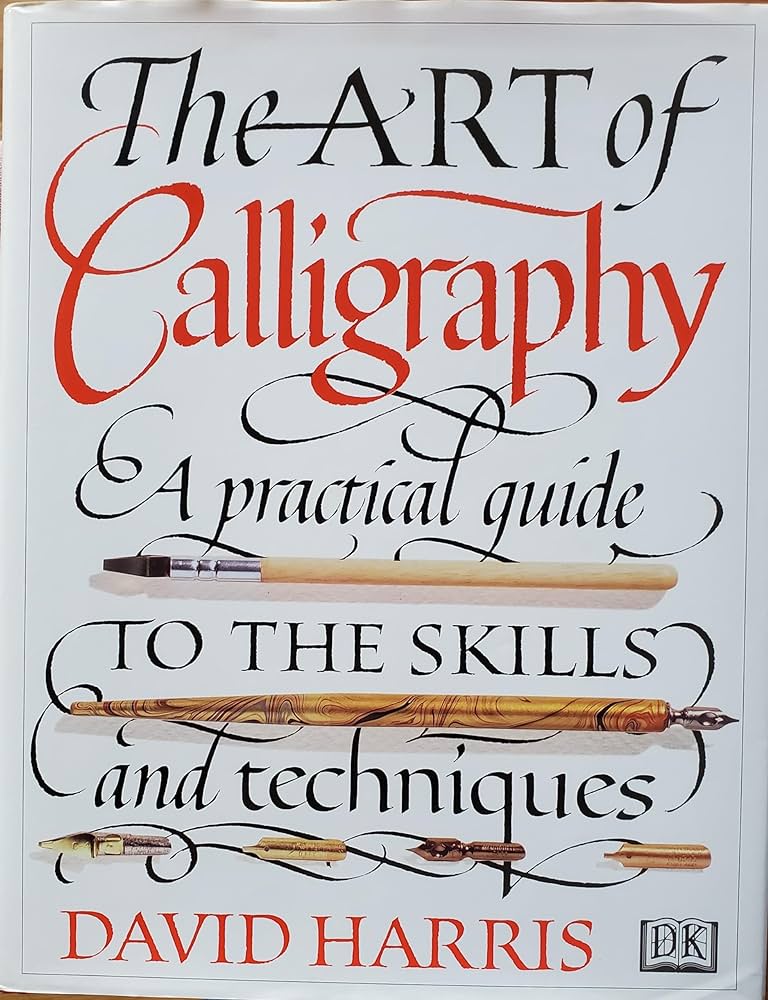Calligraphy has always fascinated me. The elegant strokes, the harmonious curves, and the overall beauty of each letter have captivated my attention for years. Growing up, I would often find myself doodling letters, trying to imitate the graceful handwriting I had seen in old manuscripts and artworks. Little did I know that these innocent doodles would eventually lead me into the enchanting world of calligraphy.

As a self-taught calligrapher, I have embarked on a journey filled with practice, patience, and endless discovery. In this blog post, I want to share with you the art of calligraphy and provide you with a beginner’s guide to help you embark on this beautiful journey yourself.
The Tools of the Trade
Before delving into the techniques, it is important to have the right tools. Calligraphy can be practiced with a variety of pens and brushes, each creating a different style and effect. The most common tools used in Western calligraphy include dip pens, fountain pens, and brush pens. Dip pens offer versatility and allow you to experiment with different nib sizes, providing a wider range of lettering styles. Fountain pens, on the other hand, offer convenience and ease of use, making them a great option for beginners. Brush pens are perfect for creating bold and fluid strokes, enhancing the artistic aspect of calligraphy.
Ink and paper choice also play a vital role in calligraphy. While ink cartridges are readily available for fountain pens, dip pens require dipping into an inkwell or using bottled ink. Experimenting with different types of paper is essential, as some papers may absorb too much ink or cause bleeding, resulting in less precise strokes. Smooth, high-quality papers with a bit of tooth are generally recommended for calligraphy.
Mastering the Basic Strokes
Calligraphy is all about mastering the basic strokes that form each letter. These strokes are the building blocks that come together to create graceful, flowing letters. The foundational strokes include the thin upward stroke, thick downward stroke, and the curved stroke. Practicing these strokes individually will help you gain control over the pen and understand the flow of the lines.
One of the most important aspects of calligraphy is the pressure applied while writing. Applying different pressure on the nib or brush creates the contrast between thin and thick lines, adding depth and elegance to your lettering. It may take some time to develop a sense of this pressure, but with consistent practice, you will gradually gain better control over your strokes.
Finding Your Style
While learning the fundamentals is crucial, it is equally important to let your creativity shine through and develop your own unique style. Calligraphy offers a wide array of lettering styles ranging from traditional to modern. Experimenting with different styles will enable you to find the one that resonates with you the most.
Immerse yourself in calligraphy books, online tutorials, and workshops to explore various techniques and letterforms. Try writing your favorite quotes, song lyrics, or even your own thoughts and feelings. Embrace the imperfections that come with the journey, as they often bring unexpected beauty and character to your work.
Practice, Patience, and Perseverance
Calligraphy, like any art form, requires practice, patience, and perseverance. It is a skill that cannot be mastered overnight. Set aside regular practice time, even if it’s just a few minutes each day. Consistency is key, and you will gradually notice improvements in your technique and overall confidence.
Joining online calligraphy communities, attending workshops, and seeking feedback from fellow calligraphers will provide valuable insights and support. Don’t be afraid to share your work and receive constructive criticism. Calligraphy is a continuous learning process, and by embracing feedback, you can refine your skills and find inspiration in the journeys of others.
Applying Calligraphy in Everyday Life
Calligraphy is not limited to beautiful handwritten letters or artistic projects. It can be applied in everyday life to bring a touch of elegance and personalization to various items and occasions. From addressing envelopes for special events to creating personalized gifts or even designing your own inspirational wall art, the possibilities are endless.
The meditative nature of calligraphy can also be a form of self-care and stress relief. Setting aside time to engage with this art form can be a soothing and therapeutic experience. So, grab your pen, create a cozy corner, and let yourself be immersed in the world of calligraphy.
In conclusion, exploring the art of calligraphy has been a truly rewarding and enriching experience for me. The combination of precise strokes, ink, and beautiful paper creates a symphony of letters on the page. Through practice, patience, and perseverance, you can unlock your own creative potential in the world of calligraphy. So, go ahead, dip your pen into the ink, and let the art of calligraphy guide you on a journey filled with beauty, expression, and personal growth.

